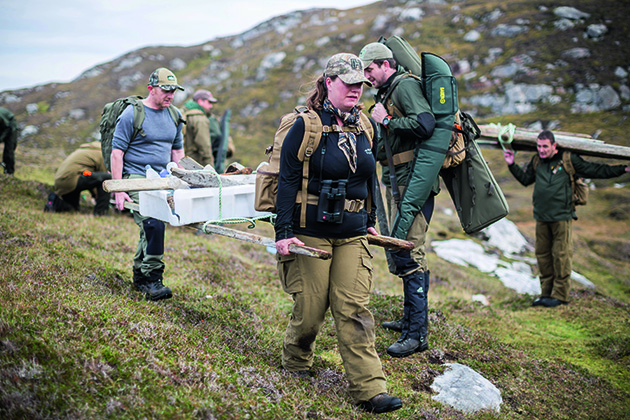How to make wigeon tufts for wildfowling decoys
Over the years I have made numerous wildfowling decoys, but one of my favourite creations are my homemade wigeon tufts. These are a simple invention that are most suited for half-light or moon flights.
In low light conditions the most visible part on a wigeon is the white patch on the rear of the bird and the white flash on the wings, which other birds seem to be able to spot from a great distance. My wigeon tufts are designed to create an illusion of ducks without putting a lifelike decoy out and to let the approaching bird paint the rest of the picture, with the help of calling.
What you need and how to make the wigeon tufts decoys.
Fence strainer wire,
Old shopping carrier bags,
And white duct tape.
These are very quick to make, taking a matter of seconds to create each decoy. Simply cut a length of wire roughly just over a foot long. Take the top section and depending on the grade of the wire bend a circle in it by hand or with the use of a vice. This should produce a “P” shape, with a straight piece of wire that acts as a stake and sticks in the ground. The loop on the other end is the body of the decoy. Take a typical supermarket carrier bag and scrunch it into a ball and place it into the wire loop, this will help create a three-dimensional shape. Holding the bag in place, use either white duct-tape or white insulation tape to secure the bag in place, wrapping the bag until the full loop is covered in tape thus creating a white three-dimensional blob. Once finished all the stakes can be cut to the same length with a pair of bolt croppers, I like to leave a good 5in of wire from the tip to the start of the loop so that I can make sure the decoy has a good hold in the ground.
Wildfowling decoys in the field
These wildfowling decoys are great to deploy in the field as they are incredibly lightweight and compact. One of the first batches I made consisted of a dozen tufts, these fit comfortably in a gamebag, still allowing room for a flask, ear defenders and ammunition etc. The simple wire stake design allows these decoys to be set up quickly and easily on a range of different ground from grassy marsh tops around floods to mudflats as the metal spike effortlessly penetrates most surfaces.
When setting the decoys up around a flood for an evening flight, I set them up in a random pattern on the grass to imitate ducks feeding on the water’s edge, making sure that the decoys have a solid back drop to make them so they stand out against the dark grass during flight time. I have also set the decoys up on the banks of muddy creaks, which works well in a morning especially on an area where the ducks flight back out under the cover of darkness.







